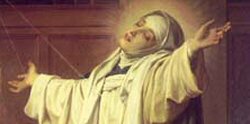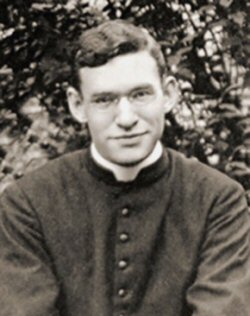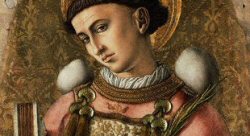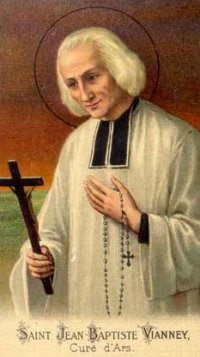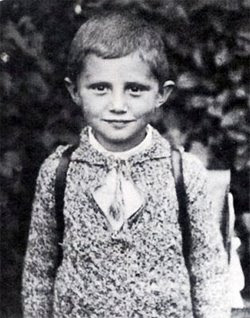 By Fr. John Trigilio
By Fr. John Trigilioposted on his blog The Black Biretta
Pope Benedict XVI washed the feet of 12 priests from the diocese of Rome this year at the Maundy Thursday Mass of the Lord's Supper at the Basilica Cathedral of St. John Lateran. The pedelavium is a poignant reminder to all in holy orders that each man is called to serve and not be served. Whether bishop, priest or deacon, the ordained ministry is one of service to Holy Mother Church and has nothing to do with personal or self-aggrandizement. This is why celebrants are warned in the rubrics not to insert their own agenda nor are they to introduce illicit innovations let alone proliferate outright liturgical abuses for any reasons whatsoever since they are ordained to serve the Mystical Body of Christ. The People of God deserve valid and licit and reverent Sacraments and they deserve nothing but the best that Jesus Christ gave His Church for the sanctification of souls. Anything less is equivalent to sacerdotal malpractice.
A growing concern, however, is for the orthodox, devout, parish priest who literally says the black and does the red is that he may inadvertently neglect his spiritual NEEDS. Too many good and doctrinely sound priests and deacons burn out or become discouraged, disenchanted and disillusioned. These men have NOT lost their faith, but they are very close to losing HOPE. These men do not leave the priesthood, but they can lose their zeal and their love of what they do IF they do not take care of their own spiritual needs.
Secular progressive bishops who use a corporate business paradigm to run the diocese instill a dangerous mindset among the presbyterate. If BEING a priest becomes less important than DOING priestly things, trouble is not far behind. As B16 (and Fr Z) have pointed out, Catholicism is the religion of the great et ... et (BOTH ... AND) as opposed to the aut ... aut (EITHER ... OR). Hence, the Church needs men to BOTH BE priests AND to DO priestly things (i.e., ACT like priests).
American pragmatism has infiltrated priestly formation, both seminary and ongoing. Many priests convince themselves that they are good priests as long as they spend their entire day, week, month, year, etc., DOING priestly things. Certainly, no one can argue that men are ordained deacon, priest or bishop to serve the Church in that particular ministry. Priests are ordained to celebrate Mass, to hear confessions, to anoint the sick, to marry couples, to baptize babies, to preach and teach the truths of our faith, to solace the sick and dying, et al. YES, YES, YES. We are ordained to do these sacerdotal works of mercy (spiritual and coporal). Each priest is ordained to be an ALTER CHRISTUS so that he can act IN PERSONA CHRISTI when he administers and celebrates the Sacraments. The Sacred Liturgy is the zenith of what a priest DOES.
Simultaneously, the priest must also tend to his own spiritual welfare just as he does his physical. Physiological and psychological health are in the hands of each priest himself. So, too, the SPIRITUAL health of priests, deacons and bishops. We all have our own dentists, doctors, mechanics, and tax advisors. How many ordained clergy still have and use a SPIRITUAL DIRECTOR, however? Seminary forced you to have one and use one. If you missed your monthly meeting, he came looking for you just like if you missed Mass, class or Liturgy of the Hours. Once ordained, however, even those who faithfully pray their Breviary do not always show the same commitment to monthly or bi-monthly spiritual direction. Some priests fool themselves into thinking that they are 'too busy' to take a day off or take a vacation. Yet, canon law and local diocesan policy guarantee and exhort clergy to take some time off. Jesus was no workaholic. He took a nap in the boat; He ate at Zaccheus' home; He frequented the home of Martha, Mary and Lazarus. He preached in the synagogues and in the streets and fields. He WORKED and He RESTED.
Clergy (deacons, priests and bishops) who consistently ignore or avoid regular days off and vacation are not martyrs for the cause but they will drive others to seriously consider making them a martyr. ONGOING FORMATION of the clergy, as demanded and called by Vatican II (presbyterorum ordinis), Canon Law and the Directory on the Ministry and Life of Priests, is not a suggestion or an option. It is a MANDATE. The ordained NEED to promote and facilitate ongoing SPIRITUAL, THEOLOGICAL and PASTORAL formation in a FRATERNAL setting.
Besides days off and vacation, canon law DEMANDS clergy take an annual RETREAT. It also STRONGLY encourages participation in workshops and/or seminars designed specifically for the ordained ministry. Fraternal associations are also given full and enthusiastic support. Sadly, many priests and deacons NEGLECT these important resources.
As President of the Confraternity of Catholic Clergy, I see the invaluable and priceless worth of ONGOING FORMATION. I also know of priests who only get to confession once a year when they are on retreat or at the annual gathering of priests in their diocese for the Chrism Mass. To be a good confessor, we priests need to be good penitents ourselves. Since we are in the confessionals most if not every Saturday, it is difficult for us to get to confession in comparison to the laity who come to us week after week, month after month.
MONTHLY confession is possible if a cleric is part of an association or group of priests/deacons who meet regularly for an afternoon, morning or evening of recollection. Opus Dei and the Legionnaires of Christ, e.g., sponsor such monthly gatherings as do local chapters of the Confraternity of Catholic Clergy. Yet, we often hear from orthodox, pious and dedicated priests that they cannot come every month because they have other commitments to the parish. If he had a cavity, Father MAKES TIME to get to the dentist. If his car breaks down, he MAKES TIME to go to the local garage. If his soul NEEDS regular spiritual direction and frequent confession, then he MUST MAKE TIME.
Visiting the nursing homes, teaching RCIA or CCD or Pre-Cana, preparing your Sunday sermon, attending parish council and finance committee meetings, etc. are all part and parcel of being a priest or deacon in a typical parish in 2008. If the cleric, however, does not spend some QUALITY time (weekly or monthly) with other solid colleagues for fraternal support, he will eventually turn elsewhere, and it may not always be a good place at that.
I ask Bishops to urge their priests and deacons to make their spiritual health a PRIORITY. Just as we NEED a healthy diet of good food and exercise to stay physically fit, we need regular direction and frequent confession as well as our annual retreat and occasional workshops or seminars. We would all love to fulfill the romantic vision of one day falling over dead while celebrating Mass or going on a sick call, i.e., to die ON THE JOB. It is a noble thought but not probable. Most of us will die of disease, accident or old age like our parishioners, late at night. If the priest or deacon or bishop neglects his spiritual need for direction, confession, fraternity and prudent leisure time, then the probability is that he will become mean, nasty, bitter, ornery, cantankerous, obnoxious or completely insane. Burned out, stressed out clergy either leave the active ministry or they stay and become resentful that they are not appreciated; they they have been overlooked; that no one is ever satisfied; that no good deed goes unpunished.
Bad enough diocesan bureaucrats, episcopal sychophants, and other ambitious 'professional' clergymen get good assignments, promotions, honors, recognition, support and appreciation from their superiors, but when the real good guys who defend the Magisterium and celebrate valid, licit and reverent sacraments and who spend their lives in service to their parish, diocese or religious community, get nothing but disdain and grief from their own kind, then a solid foundation is all the more necessary.
A house built on rock rather than on sand, will survive the storm. So, too, clergy who make their spiritual well being a PRIORITY are like the fathers of families who make sure they are physically and emotionally fit so as to live a long and healthy life in order to best take care of their wives and children. Clergy need to BE good priests as well as DO priestly work.
Are two or three hours a month too much to ask to maintain a healthy spirituality? Once a month gathering with brother priests for an afternoon or morning of recollection, with time before the Blessed Sacrament, Benediction, spiritual conference, rosary, Divine Office, and time for confession followed by an opportunity for FRATERNITY --- are not our people worth it for us to be at our best so we can in turn give them our best? If we do not make time now and then for ourselves, we can be tempted to compensate with other avenues. Annual retreats need ongoing sustenance via regular spiritual direction. Frequent confession and participation in theological discussions help to better serve our parishioners. The CCC and Opus Dei have helped FORM me before and after ordination. Sadly, I know too many priests and deacons who are 'too busy' for their own spiritual needs. That is negligence, I hate to say. No different than someone who neglects their physical health.
Imagine a priest who did not bathe for over a month. As Martha said in the Gospel of John, "surely, Lord, there will be a stench." Bishops have had to tell priests who neglected their physical health to go get help. We may need that for the spiritual health as well. Problem is that unlike the stinky cleric who has B.O., the one who has not been on retreat for several years, and/or has not been to confession for over a year and/or who has not read or discussed a theological document since seminary days does not have the same 'odor'.
Parishioners, if you love your priests and deacons, urge and encourage them to remain orthodox in their teaching. Thank them for their daily prayer and for their service every day, every week, every month and every year to the parish. Show appreciation for their time to others BUT also urge them to give their own souls time, too. I had several parishioners from across the nation ask what can they do to help their pastor, parochial vicar or deacon. I told them to give them gift subscriptions to orthodox Catholic newspapers and magazines; offer to help pay their travel expenses to attend a seminar or workshop (like the annual Convocation of the Confraternity of Catholic Clergy this July 14-17 in Baltimore). The diocese or parish usually gives them a stipend to pay some if not all the fees to attend retreats, seminars and workshops but not travel expense. An inexpensive bus, train or plane ticket might make an excellent birthday or anniversary or ordination gift for a favorite priest or deacon. There have even been a few laity who drove their pastor to several of our annual gatherings.
Doctors, lawyers, politicians, and teachers network with each other and make professional friendships. Priests and deacons are no different. We NEED to support each other. We need our people to understand Father may not be physically on the property 24/7, so don't wait until someone is on their deathbed to call the priest for the last rites. Call the rectory regularly for someone to bring Holy Communion to the sick and for occasional anointing of the terminally ill rather than wait until it may be too late. And encourage your parish clergy to aggressively pursue regular ONGOING spiritual, theological and pastoral formation in a fraternal setting. It will benefit him and you in the long run. Priests who LOVE the priesthood and love their people must also love themselves enough to take care of and provide for their own spiritual NEEDS otherwise they will not be able nor be around to take care of the spiritual needs of their parishioners.

























